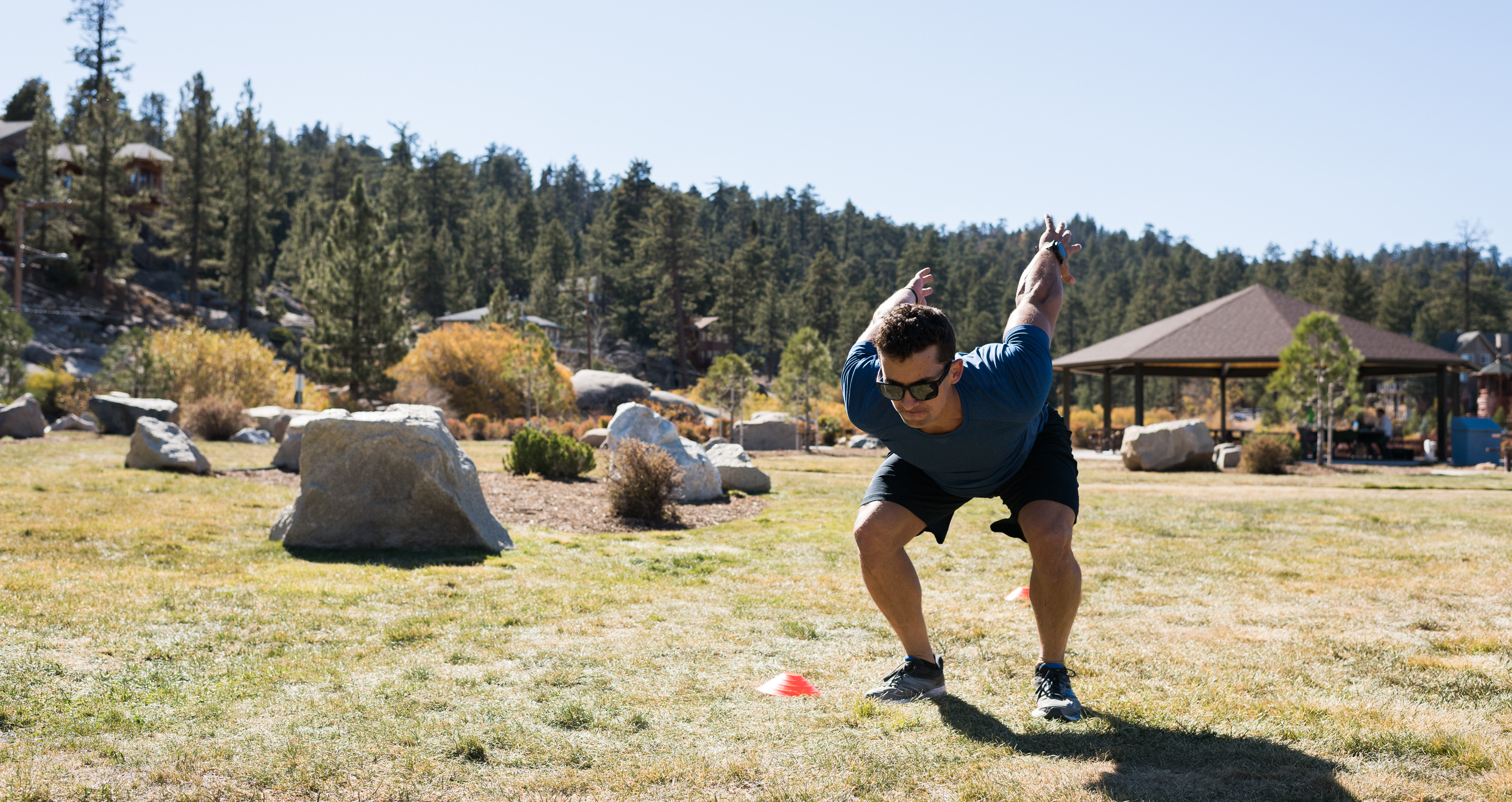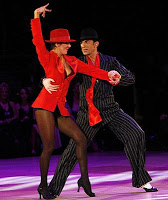Start With Why
Posted by Gray Cook

I began to realize it was all just movement in the late 1990's as I started collaborating with skill coaches from various sports. When I first met Steve Hayward, one of my partners in the Baseball Health Network, he was running a local baseball training facility and he noticed a distinct difference in the players he worked with that trained with me and wanted to find out more about what I was doing. I would go and watch his lessons and take a pause when he was struggling getting a concept across to a player. For example when he was trying to teach them to get over their front leg, I would jump in and say, "Steve, I don't think they have the ability to do that". I would then take the athlete and show how they don't know how to hinge their hips properly, so his cues were falling on deaf ears, much to the frustration of Steve and the athlete. I would then do some quick drills to get them to understand how to hinge their hips better and magically they could do what Steve was asking.
Around that time, I was getting deeply into my fascination with various movement analysis methods and assessment techniques and was engrossed in Gray Cook's works and learning the early foundation of what is now the Functional Movement Screen. What attracted me even more than the actual screens themselves was the systematic breakdown and approach. It was taking what I was learning from people like Shirley Sahrmann about movement and adding another layer of objectivity and simplicity.
I then started to step back and remove the ball and bat, helmet, etc. from the picture and just look at the key components of what each task required. By focusing on the movement rather than the sport, I was able to categorize the core elements and systematically design a program based on the client's current movement competency and physical capacity. Aligning those demands with the requirements of the sport presented a clear pathway to achieve the athlete's goals.
This then led to my "Power of 3" system for athletic movement which looks at all activity on your feet broken down into 3 categories, each with 3 subcategory elements:
1) Foot Position: Everything you do on your feet, you're in one of 3 foot stances-
1. Open Stance (Feet even)
2. Split Stance (Feet staggered)
3. Single Leg
2) Phase of Movement: We are constantly transitioning between the following phases-
1. Acceleration (Speeding up)
2. Deceleration (Slowing down)
3. Amortization (Transitioning from one to the other)
3) Direction of Movement: All movement happens in one of 3 planes of movement-
1. Sagittal (Front and back)
2. Frontal (Side to side)
3. Transverse (Rotational and/or diagonal)
Beyond that, it is now necessary to know some basic capacity requirements:
-Force Production - How much strength/power is necessary? Are they throwing a 5oz. ball or trying to move a 300lb human being who is fighting back?
-Rate of Force Production - How quickly does this force need to be applied? Is it a shortstop that needs to be quick and explosive or a wrestler/grappler that has to apply and endure sustained holds?
-Activity Duration - How long do they have to apply this force? Is it an offensive lineman who has to get in a fight for 5 seconds or a 800 meter sprinter who needs to sustain speed for almost 3 minutes?
-Recovery - How much time between bouts of activity? Is it a punter who may make 2-3 punts in a 3 hour game or soccer midfielder who keeps perpetually moving for 45 minutes?
 Once I know these factors, I can now write a program for just about any client for any sport/activity, even though I may not have an in-depth knowledge of it. For example, I had the good fortune of working with two of the top Latin dancers in the world for a few years. Sure, I could cut it up in the club in my younger days, but I'm clueless when it comes to competitive dance. No problem. Ask some key questions, watch some video of them competing and then evaluate their current physical abilities and you have the blueprint for what exactly needs to be done with that client to be at their best.
Once I know these factors, I can now write a program for just about any client for any sport/activity, even though I may not have an in-depth knowledge of it. For example, I had the good fortune of working with two of the top Latin dancers in the world for a few years. Sure, I could cut it up in the club in my younger days, but I'm clueless when it comes to competitive dance. No problem. Ask some key questions, watch some video of them competing and then evaluate their current physical abilities and you have the blueprint for what exactly needs to be done with that client to be at their best.
So when someone asks me, "What's a good exercise for _______?", I have to explain that it is not that simple. People will often get trapped into looking into muscles or parts and not patterns. Does having strong forearms help someone looking to hit a baseball powerfully? Sure it does, but doing endless sets of wrist curls won't make you Babe Ruth if you can't first translate force from your feet through the hips and finally to your hands, not to mention having the skill and hand/eye coordination to hit a ball. And being able to do 1000 wrist curls in a row also might not translate into an explosive one time event like a baseball swing.
This thought process also led to me come up with a system called "Dissecting the Drill" with the assistance of my good friend, Phil Delgado, at Prodigy Training. Phil will throw out a concept that he is trying to teach his softball girls, such as infielders throwing off the wrong foot. He will then give me the key elements of what he is looking for and we throw it back and forth to break down whether it is a conceptual roadblock, a mobility limitation, lack of stability, poor patterning, limited strength/conditioning, etc. This way he is not wasting his time or his athlete's time getting really good at bad reps. We call this "Earning Your Multiples." Taking 1000 swings a day is only beneficial if it is reinforcing a good fundamental swing. If not, you are just getting tired, and worse, perfecting at a really lousy swing.
Another added bonus to this mindset and approach is the ability to be more critical when you see skill coaches in action. I'm surrounded by pitching, hitting and fielding instructors everyday. I can listen to about two minutes of their lesson or practice and know if they are an effective coach or not based on how they are communicating with their athlete(s). Unfortunately, many of them just give drills, usually just what looks cool on YouTube or at some coaches clinic, or even worse, just copying what the instructor in the next cage is doing. They may even go a step further and reach beyond their scope and prescribe ludicrous exercises to their athlete, like my client who is a baseball player who strained his hip flexor at a hitting lesson because his instructor had him flipping a tire at the end of his lesson, which he swore will help his hitting. Instructors like this should wear a ski mask over their face when they do their lessons, because they are robbing their athletes.

Eric Dagati has been serving as a coach and teacher in the fitness and performance industry for over 20 years. His experience includes working with high-level athletes and teams in multiple sports, including professional soccer, the National Hockey League, National Professional Fastpitch Softball, Major League Baseball, and the National Football League. Eric has also been a lead instructor for Functional Movement Systems since 2006, teaching workshops around the world for top organizations including the Navy Seals, Mayo Clinic, New York University Medical and appeared in the NY Times bestseller “The 4-Hour Body” by Tim Ferriss.
Posted by Gray Cook
Posted by Gray Cook
Posted by Gray Cook